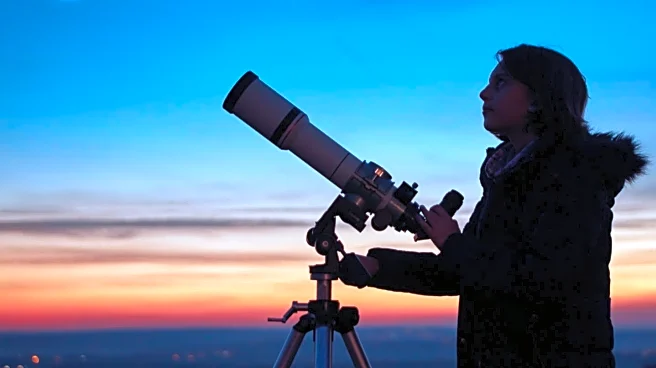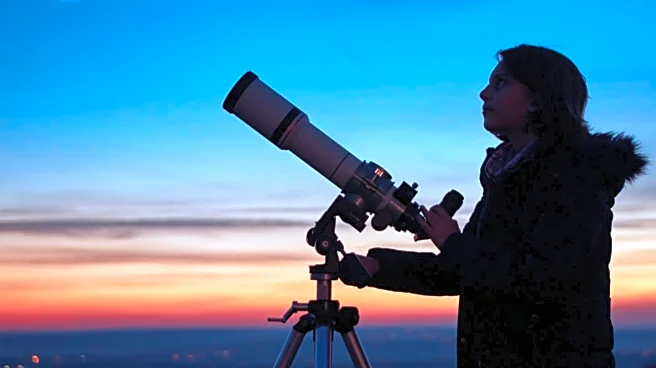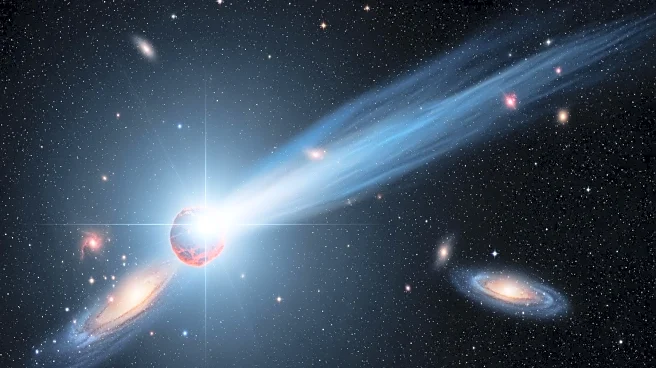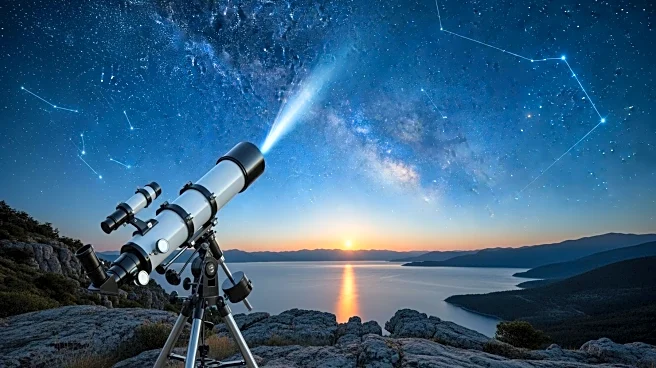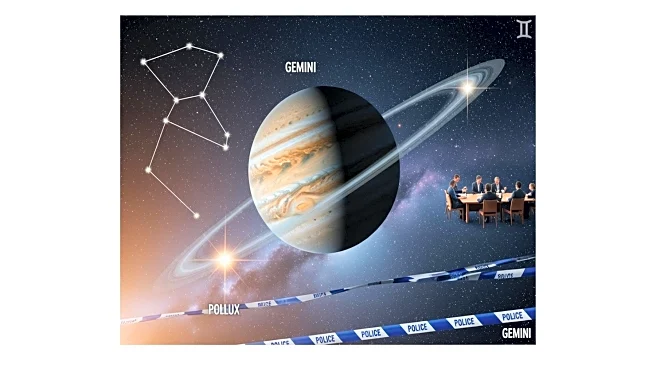What's Happening?
Astronomy magazine's Editor Emeritus, Dave Eicher, has provided guidance for observing the planet Mercury in the evening sky. Mercury, being the closest planet to the Sun, is often difficult to spot due
to its proximity to the solar glare. However, Eicher notes that the current period offers a prime opportunity to view Mercury shortly after sunset. The planet will be visible low in the western sky, and Eicher recommends using binoculars to aid in the search. Observers are advised to be patient and deliberate in scanning the horizon to catch a glimpse of this elusive planet.
Why It's Important?
The opportunity to observe Mercury is significant for both amateur and professional astronomers, as the planet's proximity to the Sun often makes it challenging to view. This event provides a chance for enthusiasts to expand their understanding of the solar system and engage with celestial phenomena. For educational institutions and astronomy clubs, this period can serve as an excellent occasion to organize viewing events, fostering interest in astronomy and science. Additionally, such events can inspire public interest in space exploration and the study of planetary movements.
What's Next?
As Mercury continues its orbit, it will eventually move out of the optimal viewing position. Observers are encouraged to take advantage of this window of opportunity while it lasts. Astronomy clubs and educational groups may plan events or workshops to maximize public engagement. Future celestial events, such as planetary alignments or meteor showers, will continue to offer opportunities for public observation and education, keeping the interest in astronomy alive.
Beyond the Headlines
The visibility of Mercury also highlights the importance of light pollution management in urban areas. As cities grow, the ability to observe celestial events diminishes, prompting discussions on sustainable lighting practices. This event underscores the need for policies that balance urban development with the preservation of natural night skies, ensuring that future generations can continue to enjoy and learn from astronomical phenomena.
